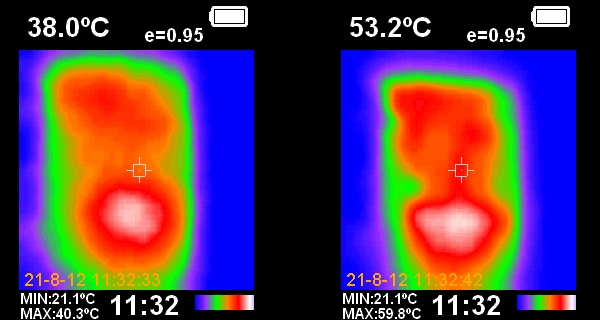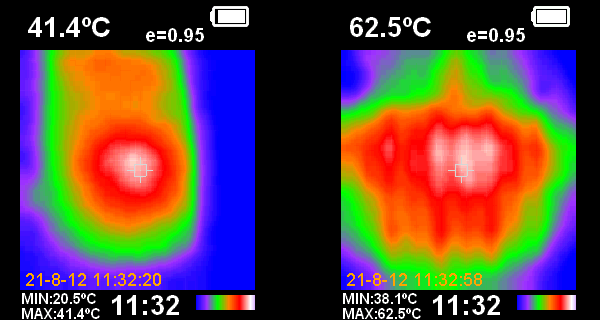The hardware abstraction layer development has taken an entire year and is finally nearing completion (final details in an upcoming log). In the meantime there were some minor updates to the hardware, some of which were discussed in the last log. This resulted in the rev. 6 board shown below:

It was time to do a more detailed thermal analysis to make sure this hungry beast will not overheat. The F-series TTL chips consume about 5mW per gate and the 1,425 gates making up the Novasaur dissipate close to 7.5W. The regulator also dissipates up to 1.5W for a total power consumption of 9W.
The plan is to have a sealed enclosure, so no ventilation holes. The components are cooled by radiating heat that is absorbed by the case. The case then radiates this heat to the environment until it reaches a thermal equilibrium. At this point the temperature is stable and the best way to measure this is via a thermal imaging camera.
A budget camera was obtained and some initial measurements made. The picture on the left is the external case temperature after running for about an hour at 21C ambient. The picture on the right is with the cover removed showing the circuit board.

There is a hot spot reading around 41.5C from the outside of the case and 62.5C from the inside. This area is centered around the B, X, and Y registers. The B register is the pipeline between the data and program address space and clocked at 16.5MHz. Both the X and Y register have pull-up resistors and are cycled at a similar rate. Together these three chips represent the highest heat density on the board.

There is a second hot spot over the regulator shown in the left picture below (the H shape towards the bottom is the heatsink). The spot above that is the PAL, which also runs quite hot. It's interesting to note that the regulator is slightly cooler at 60C than the hottest chips.
For comparison the picture on the right shows a hot spot on the 6V power adapter case. This had a temperature of 49C, which was several degrees above the Novasaur case.

Note: These were just some initial pictures and more accurate and detailed images are planned. The emissivity was the default 0.95, but it is probably more accurate at around 0.90.
 Alastair Hewitt
Alastair Hewitt
Discussions
Become a Hackaday.io Member
Create an account to leave a comment. Already have an account? Log In.